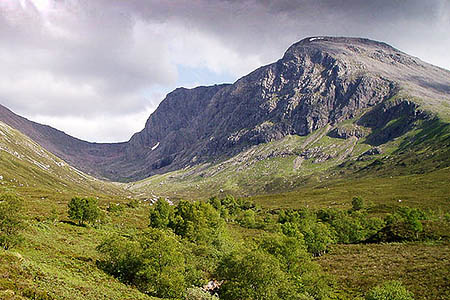Climbers are hoping for some surprise finds in the most detailed botanical survey of cliffs on Britain’s highest mountain.
A dozen mountaineers will take part in the project to record flora on the North Face of Ben Nevis.
The three-year scheme will log the location of plants on the 700m (2,300ft) high rocky face of the Lochaber mountain.
Ten experienced climbers and two climbing botanists will record their findings over the 125ha (310-acre) area, owned by Rio Tinto Alcan and which forms part the company’s landholding to provide hydroelectricity for the Lochaber aluminium smelter in Fort William.
The North Face of Ben Nevis is internationally important for geology and plant life, and is also important for birds.
The mountain and some of its outliers provide exceptional habitats for rare arctic-alpine flora. The Ben Nevis special area of conservation and site of special scientific interest cover much of the area.
A geological survey will also take place to determine its influence on the plants.
SNH said it believed a number of new locations for rare species will be found, as well as some species which have so far gone unrecorded on Ben Nevis. The survey will also assess any effects of recreation and climate change on the health of the rare plants.
Cathy Mayne of SNH said: “We are very excited to be doing this joint venture between professional botanists, climbers and geologists. It will yield important new records on the rare plants found on Ben Nevis.
“The results should tell us more about the geology of the face and the influence this has on plant distribution. It should also flag up any imminent threats to the plants and help us decide if any action is needed to help them.
“Finding something not previously recorded here would be a real bonus and incredibly exciting were it to happen.”
The project is led by the Nevis Landscape Partnership in collaboration with Midland Valley Exploration. It is sponsored by Mammut and funded by Heritage Lottery Fund, Scottish Natural Heritage, and Highland Council.
SNH is providing £26,000 of the £52,000 total cost of the project.
It involves two botanists and up to 10 climbers under the supervision of a Mountain Guide, and one or more SNH officers.
This week climbers are finding out more about the special plants that live in the shady gullies and ledges of their mountain workplace and learning how to identify individual species. SNH said it hopes this will also raise awareness among climbers of the vulnerability of rare plants on the face.
The training will be followed by one-week surveys next week then again in 2015 and 2016.
And at the end of the three years a blueprint will exist for repeating this kind of collaborative work on other cliffs in Scotland at which botanical records are scarce or absent.
The professional climbers will be trained in the identification of the relevant flora to conduct the survey and will use their rope-access skills to safely access the north face to look for plants.
Clean, dry rock will generally be avoided and the focus will be on the loose, damp ground where these species are most likely to be found.
Botanists will be on hand to assist in the survey and identification of the plants, being taken to the richest locations by the climbers. The fieldwork will take place over a week and plant images and habitats will be uploaded onto a website.
The climbing area being survey areas follows: Brenva Face, NE Buttress, Orion Face; Zero Gully to Gardyloo Gully; Gardyloo Gully to Number Two Gully; Number Two Gully to Number Five Gully; Number Five Gully to Red Gully.

Tristan Semple
06 August 2014Liz - great article, but....
Some of your information is incorrect.
Please contact me - Tristan Semple, Project Manager, 07554 995428
Also - core funders have not been acknowledged. Public money does not come to these projects without acknowledgement. Please be more careful in future.
Bob
07 August 2014This story has been amended using information supplied by Mr Semple.
Bob Smith, editor